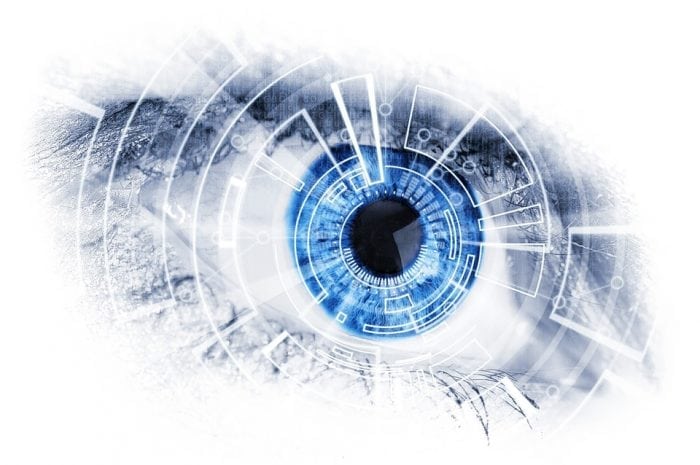
The development of functional bionic eyes is currently an unfulfilled objective in the field of prosthetics. Such a development would be used to help improve vision for the visually impaired and one day to restore sight for the blind. The 3D printed bionic eye prototype developed by the McAlpine group from the University of Minnesota is an incremental but important step in the right direction.
The McAlpine group is a mechanical engineering group that focuses on developing and synthesizing functional materials and devices using 3D printing. Before becoming an associate professor at the University of Minnesota, Dr. McAlpine worked to develop other 3D printed body parts, including a 3D printed bionic ear.
Dr. McAlpine has also been part of teams that have developed a biological fabric that can be used as a skin replacement, and realistic artificial organs used for surgical practice. His group at the University of Minnesota has also developed scaffolds that have embedded living cells for restoring some functionality for people with spinal cord injuries, and a temporary tattoo-like electronic circuit sensor that can be 3D printed directly onto skin.
According to McAlpine, the idea to design a 3D printed bionic eye came from his mother. Dr. McAlpine’s mother is blind in one eye and has asked him ‘When are you going to print me a bionic eye?’.
Bionic Eye Prototype Design
To start to build a bionic eye, the McAlpine research group used a piece of curved glass in a hemispherical shape to approximate the shape of an eye. A custom-designed ink was sprayed into the piece of glass along the curved walls into a pre-designed pattern. The ink used contains silver nanoparticles and formed the first layer of material 3D printed along the surface of the glass. Using a 3D printer to uniformly layer the silver nanoparticle ink along a curved surface was a successful demonstration of the ability of the researchers to print on a surface that isn’t flat. To complete the process of building the prototype, the researchers used their 3D printer to add a layer of a semiconducting polymer to create interconnected photodiodes in an array of concentric circles. The photodiodes convert light into electrical signals. The prototype currently takes one hour to print using the custom 3D printer designed by the research group.
The result is an array of highly sensitive image sensors that possess a wide field of view. The design offers flexibility and functionality but is not without challenges and a need for further development.
A benefit to the design approach used by the McAlpine research group is the lack of use of cleanrooms or other associated microfabrication technology. The researchers 3D print their design using a custom-built 3D printer that is capable of printing with multiple different materials (that have also been designed by the group) in regular laboratory conditions. This reduces the cost and complexity of the system required to manufacture the bionic eye design.
Other Related Research
Using a 3D printer to create functional artificial body parts is not a new idea, but it has more recently become an increasingly viable option. In the area of artificial eye development, human corneas have been 3D printed just a few months ago this year. The corneas are made by 3D printing “bio-ink”, a medium made of an alginate and collagen base seeded with viable corneal stem cells from a donor, in concentric circles. Further testing is still required, but the synthetic corneas have the potential to be used as functional transplants in humans. Researchers have also been working on fabricating organic photodetectors that are curved using 3D printers.
Challenges in 3D Printing Functional Eyes
It is the spherical shape of eyes that make producing 3D printed bionic eyes so difficult. Typically, 3D printing is performed on a flat surface and thin layers are added to produce a 3D object. To print delicate photodiodes reliably on the inside of a curved piece of glass used to represent the curve of the orb of an eye, the challenge lies in preventing the freshly printed ink from dripping down to dry in a puddle at the bottom of the concave piece of glass. To solve this problem, the McAlpine group first printed a base layer of ink that contained silver nanoparticles that successfully dried uniformly in place along the curves of the glass walls. By manipulating the surface tension of the ink and its adhesion to the glass surface, the researchers were able to prevent migrating of the drying ink down the sides of the glass. This first layer allowed the researchers to add successive layers of materials in the correct locations.
Of course, another challenge to the process of making bionic eyes suitable replacements for real human eyes will be in developing the connection between the artificial eyes and the optic nerve or in finding a way to integrate the bionic eye and the pre-existing human eye, like a highly technical and connected contact lens.
Further Research
While the creation of the prototype has been a successful first step, it is still a first step. The photodiodes were able to convert light into electrical signals with an efficiency of twenty-five percent, which is a good result but does have room for improvement. Adding photodiodes with increased efficiency to the bionic eye will help to improve the functionality of the artificial eye.
Another development that the research group would like to make is the development of a different, softer material that could be formed into a concave shape and onto which they could print photodiodes. This device could then be implanted into a real human eye to replace the retina.
With further iterations of design improvement, the bionic eye prototype should become a feasible replacement for unseeing or impaired real human eyes. Using 3D printing technology to manufacture the artificial eyes will save in manufacturing time and should enable the reliable production of artificial eyes. In time, humans could be viewing the world through futuristic bionic eyes.








